60 IN THE EYE OF THE BEHOLDER
IN THE EYE OF THE BEHOLDER
by David Hancock
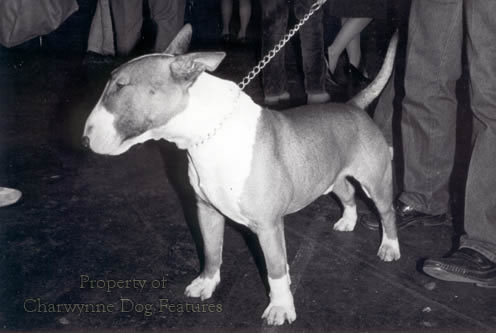 Many members of the public view dog shows as bizarre, a view reinforced by the BBC TV coverage of Crufts, highlighting every excess rather than the serious undertow. Unlike game fairs and country shows, most dog shows do not permit unentered dogs access. This results in less public interest and therefore less understanding of dog breeding and exhibiting. The bigger game fairs feature a parade of sporting dogs accompanied by a commentary on their breed origins and field use. If the general public do not feel welcome at dog shows then their understanding of canine matters is not developed. If dog shows are viewed merely as canine beauty contests, how can the merit of the breeding stock on display there ever be respected?
Many members of the public view dog shows as bizarre, a view reinforced by the BBC TV coverage of Crufts, highlighting every excess rather than the serious undertow. Unlike game fairs and country shows, most dog shows do not permit unentered dogs access. This results in less public interest and therefore less understanding of dog breeding and exhibiting. The bigger game fairs feature a parade of sporting dogs accompanied by a commentary on their breed origins and field use. If the general public do not feel welcome at dog shows then their understanding of canine matters is not developed. If dog shows are viewed merely as canine beauty contests, how can the merit of the breeding stock on display there ever be respected?
In the summer of 2004 the BBC showed a programme which featured criticism of the Bulldog's anatomy by a 'celebrity vet'. Heavily condemned by the dog press, the programme also included an interview with a well-known dog show judge who attempted to explain all pure-bred dog breeding as being justified by the mere pursuit of canine beauty. Although it would have strengthened the main case being presented in the programme to have used a more senior more authoritative vet, it is surely the duty of any veterinary scientist to speak up when they come across canine conditions which affect the well-being of the domestic dog. That apart, can the pursuit of beauty truly justify every breed configuration? Have show breeders actually made their various breeds more beautiful?
It is worth looking at say a breed or two from each of the groups in the show ring to verify or dismiss the case for the show ring as a beauty contest. Take the Bull Terrier from the Terrier Group, the Basset Hound and the Bloodhound from the Hound Group, the Bulldog from Utility, the Mastiff from the Working, the Rough Collie from Pastoral, the Clumber Spaniel from the Gundog and the Pomeranian from the Toy Group. Put aside the health and welfare aspects of their breeding; overlook the need for every breed to pay homage to the function for which it was designed. Let's just concentrate on beauty, acknowledging the 'eye of the beholder' caveat. In each of these long-established breeds are the current examples perpetuating 'the beauty of the breed'?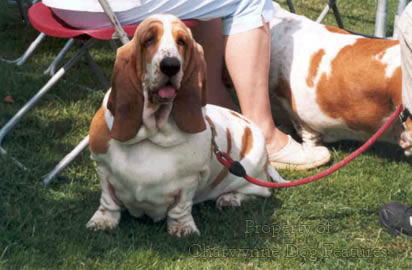
Our dictionaries tell us that beauty is a pleasing combination of qualities, such as shape, proportion and colour, which delight the sight, please one or more of the senses or the mind, a particular grace or excellence. Aesthetic appeal will always be subjective, but beauty of form can still be universally acknowledged, the camera or a painting often conveying this. It's interesting and of value to compare the depictions of breeds in past times to the specimens of those breeds we see in our show rings today. The pictorial record of our breeds of dog is immensely important; it illustrates the historic mould for each breed and can serve to establish breed type, especially when disloyal factions try to lead a breed away from true type to 'their type'.
A casual new visitor to dog shows will not always be aware that the early specimens were in some breeds markedly different from the type now being sought by breeders. The Bull Terrier hasn't always featured a sheep's head; the Bulldog hasn't always been muzzleless; the Mastiff has not always been so heavy and ponderous or the Pomeranian so tiny. The Bloodhound was once tighter-eyed and tighter-mouthed and the Basset Hound leggier. The Rough Collie hasn't always been so heavy-coated or so Borzoi-headed. Have such changes made each of these breeds more beautiful? Have they been so gradual that fanciers haven't noticed until it's too late? However changes occur, it is simply not honest to claim at say 'Discover Dogs', when asked why such a breed looks the way it does, to answer that it's because it always has.
Sadly far too many breed histories perpetuate former mistakes, misconceptions or misinformation. In many old depictions the Mastiff is portrayed as a very good-looking dog indeed: symmetrical, active, athletic and neither heavy-headed nor loose-lipped. Increasingly, today's specimens are looking more and more like the Alpine Mastiff, which resembled a Smooth St. Bernard. The Mastiff was re-created in the 19th century using Great Dane, Alpine and Tibetan Mastiff blood, all of course from overseas. It is absurd to describe the contemporary breed of Mastiff as being the same dog as the one bearing that title two hundred years ago in England or to prize its English heritage. Few would describe today's breed as beautiful but there was a majestic beauty about the big strapping Mastiffs of the early 19th century and before that. The longer coats cropping up in the breed and the much longer ears defy the breed standard but don't seem to deter exhibitors or even judges in today's rings. Outcrossing to alien breeds to achieve great size brings other physical attributes too. It certainly hasn't brought good looks to the breed of Mastiff. 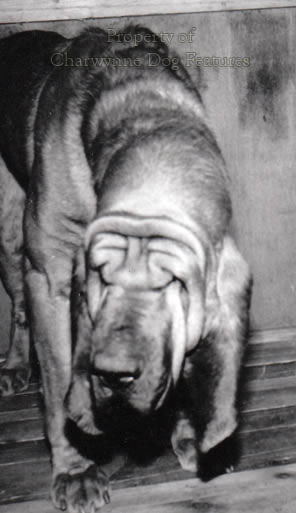
The Bulldog is rarely described as a beautiful breed. But my purpose is not to establish whether it is or it isn't, but to ascertain whether the show ring has increased its aesthetic appeal. Before the Pug cross, the Bulldog was, if its depiction then is at all accurate, more symmetrical, more athletic, better proportioned and more pleasing to the eye. 20th century books on the breed omit to mention this outcross, but half a dozen reputable Victorian or Edwardian writers on dogs testify to it taking place. The legacy of Pug blood in the Bulldog is easy to spot: the muzzle-less skull, the wrinkle, the beauty spots, the fawn smut colouration and the trace or darker spinal marking. Outcrosses usually bring long-lasting slow-to-surface features. Thirty years ago a distinguished Pug breeder told me that the problems of obtaining the correct ear carriage in her breed came from the 'unwise introduction of Bulldog blood in the 19th century'. From the pictorial evidence it does not look as though the show ring has improved the Bulldog's appearance.
The Gundog Group can lay claim to containing the most handsome collection of dogs of any group. The setters especially have a natural grace, beauty of form and absence of exaggeration which make them pleasing to the eye. Beauty of movement however doesn't always accompany such handsomeness. It is so disappointing to see and be ready to admire a startlingly good-looking setter only to groan when it starts to move. For me beauty of movement is inseparable from any judgement of handsomeness of appearance. It may well be that show ring gundogs are better looking than say two hundred years ago, but often only until they start to move. Spaniels too are bred more uniformly and prettier, but I do wish that Clumbers had to be presented in the show ring without the permittance in its breed standard of eyes which are 'slightly sunk' with 'some haw showing'. Red raw eyes are never a pretty sight.
Many shooting men complain about excessive coat on a number of gundog breeds and I can see why. But in some pastoral breeds the sheer weight of coat now detracts from the beauty of the breed. The Rough Collie is required to have a coat which fits the outline of its body and is very abundant in the frill and mane, with profuse feathering above the hocks and a very profuse tail. I suspect that within my lifetime the Rough Collie's coat has doubled in length, which to me spoils the appearance of a distinctly handsome breed. The coat no longer fits the outline of the body, it drowns it. No dog could work with such a coat in the pastures. No shepherd would wish to own a dog with such a coat. For me this is a beautiful breed being slowly but surely ruined by its sheer weight of coat. No longer does the coat fit the outline of the body, as demanded by the breed blueprint; the physical beauty of this breed is in peril.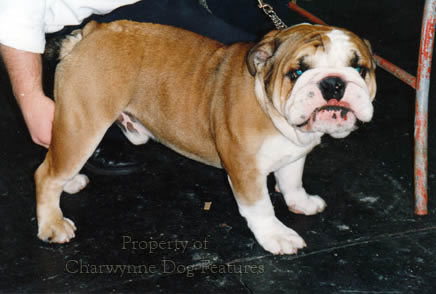
We have made the Pomeranian into a tiny dog. The production of a much tinier version is a matter of choice; my concern is the not the preference for the dwarf variety but the loss of the very beautiful larger one in so doing. The introduction of the Wolfspitz from Germany and the Japanese Spitz has to some extent filled this gap. But we cannot claim that the show ring is producing more beautiful dogs when the bigger Pomeranian is just allowed to disappear. In his Dogs since 1900 (Dakers 1950) Arthur Croxton Smith writes: "My own impression...is that they lost favour with the public as the dogs of medium size, such as people like for companions, were ousted by the tinies, which seem more in place in the show pen than anywhere." Perhaps the re-emergence of the bigger Pom would reinvigorate public interest in them as companion dogs. It was the larger Pom which attracted the interest of Queen Victoria and led to the breed being favoured in Britain. By withdrawing challenge certificates for dogs over 7lbs the Kennel Club robbed us of a beautiful dog.
When I look at depictions of Bull Terriers by Cecil Aldin, Maud Earl, John Ferneley senior and William Weekes and then compare those dogs with the egg-headed specimens of today, there is no doubt in my mind that we have substituted an ugly dog for a much more attractive one. Similarly if you look at Bulldog paintings by say Wright Barker in 1893, Arthur Heyer in 1890 and prints of around 1850 a far more appealing animal is revealed. Ben Marshall's Mastiff of 1799, Ben Herring's Mastiff portrayal of 1855 and Edwin Douglas's Collie of twenty years later show much more alluring specimens than we see today. Contemporary fanciers may well disagree but I wonder if this isn't because they are just conforming with modern fashion (and desiring to win with the altered breed type) rather than favouring it. I found it hard going at Crufts once when explaining breed points to a non-dog show person. She couldn't see why at a beauty contest a Mastiff was able to feature leatherpatch-like elbow growths; the pursuit of beauty of form wasn't manifesting itself here.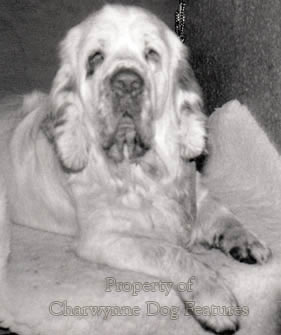
Perhaps it is time for the Kennel Club to define what is meant by its self-imposed mandate of improving dogs. Improving means producing something better. The Crufts catch-phrase of 'the best of the very best' is questionable without a definition of what the dogs exhibited are best at. I have no argument at all with the desire to produce handsome dogs but for me a beautiful dog has to have beauty of movement too. In a new century already dominated by animal welfare concerns, the word soundness should feature more prominently. Soundness before beauty is a worthier claim; the soundest of the sound is a more admirable slogan. Crufts has to be so much more than a beauty contest; it is a livestock show where future breeding stock is assessed. But before it can be regarded more seriously, the fluffy doggie image put forward by the BBC, and presumably approved by the show organisers, needs to be shed. An exhibition of animals bred for excellence needs to come across as noetic not poetic.
Writing three centuries ago, Alexander Pope penned these prescient perceptive words:
"Beauties in vain their pretty eyes may roll;
Charms strike the sight, but merit wins the soul."
Beauty does appeal to the eye and please the mind. But merit, that quality which justifies reward, does more, it lifts the spirit, satisfies the quest for high standards, truly 'wins the soul'. Beauty alone can never be enough, even at a dog show where physical perfection is aimed at, however impossible the task. When a handsome dog displays ugly movement it immediately ceases to be a beautiful dog to me. When a stunningly handsome dog reveals serious anatomical faults, on closer inspection, the charms which struck the sight soon trouble the mind. When you know that a strikingly good-looking dog carries hereditary flaws which will be passed on to its offspring, the mind should rebel and the soul take control. The beauty of a show exhibit, stacked for the judge's admiration, can be very temporary. Its genes and their accompanying faults and flaws are permanent.
There are many extremely knowledgeable people in dogs who share the celebrity vet's views on the anatomy of the contemporary show ring Bulldog and it is disappointing to read knee-jerk responses from 'outraged' senior KC officials in the dog press in the wake of the TV programme. The pursuit of beauty rather than soundness in subject living creatures tells you much more about human vanity than human wisdom. The eye of the beholder of beauty has to be matched by an active moral conscience too.